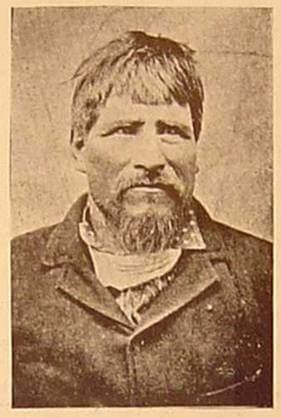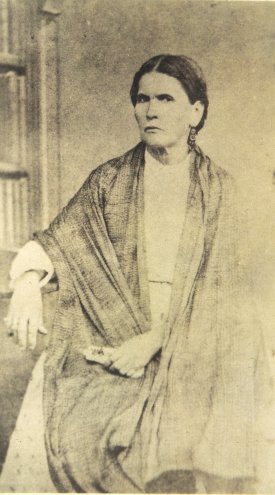|
Tetabiate
Tetabiate (''Tetaviecti,'' meaning "Rolling Stone" in the Yaqui or Yoeme language), also known as Juan Maldonado Waswechia Beltran (28 August 1857 – 9 July 1901), was the leader of the Yaqui resistance to Mexican attempts to destroy their society and incorporate them fully into the Mexican state after the execution of Cajemé in 1887. Tetabiate was the son of Pablo Maldonado and Felipa Beltran, and was born in Hermosillo, Sonora, Mexico. He was baptized at the Catedral de la Asunción, in Hermosillo, on August 31, 1857 (Iglesia Católica, 1857). Following the death of Cajeme on April 23, 1887, Tetabiate led the Yaqui nation for the next 14 years in a guerrilla war against the Porfirio government of Mexico. He was killed on July 9, 1901, in the Bacatete Mountains of Sonora Sonora (), officially Estado Libre y Soberano de Sonora (), is one of the 31 states which, along with Mexico City, comprise the Administrative divisions of Mexico, Federal Entities of Mexico. The ... [...More Info...] [...Related Items...] OR: [Wikipedia] [Google] [Baidu] |
Yaqui Wars
The Yaqui Wars were a series of armed conflicts between New Spain, and its successor state, the Mexico, Mexican Republic, against the Yaqui people, Yaqui Native Americans in the United States, Natives. The period began in 1533 and lasted until 1929. The Yaqui Wars, along with the Caste War of Yucatan, Caste War against the Maya people, Maya, were the last conflicts of the centuries long Mexican Indian Wars. Over the course of nearly 400 years, the Spanish and the Mexicans repeatedly launched military campaigns into Yaqui territory which resulted in several serious battles and List of Indian massacres, massacres. Wars 18th century The cause of the conflicts was like many of the Mexican Indian Wars, Indian Wars. In 1684, the Spanish colony, colonists in the present day Mexican state of Sonora discovered silver in the Rio Yaqui, Rio Yaqui Valley. Following this, the Spanish gradually began settling on Yaqui land, and by 1740, the natives were ready to resist. Some minor conflicts fr ... [...More Info...] [...Related Items...] OR: [Wikipedia] [Google] [Baidu] |
Cajemé
Cajemé (born José María Bonifacio Leyba Pérez, May 14, 1835 – April 23, 1887) was a Yaqui people, Yaqui military leader in the Mexico, Mexican state of Sonora. Cajemé or Kahe'eme means 'one who does not stop to drink [water]' in the Yaqui language and was originally a clan name, used by Cajemé's father. Biography Cajemé was born José María Bonifacio Leyba Perez on May 14, 1835, in Hermosillo, Sonora. His birthdate is sometimes given as 1837, due to an initial error by his biographer Ramón Corral. Cajemé's father, Fernando Leiva, was born in Hermosillo in 1798 and his mother, Juana Maria Peres, was born in Potam, Sonora. California Gold Rush At the age of 14, Cajemé accompanied his father, Fernando, and many other Yaqui people from Sonora, during the 1849 California Gold Rush, Gold Rush to Upper California. Cajemé and his father returned to Sonora about two years later. Cajemé seems to have learned English Language, English at that time, as well as having his f ... [...More Info...] [...Related Items...] OR: [Wikipedia] [Google] [Baidu] |
Yaqui Language
Yaqui (or Hiaki), locally known as Yoeme or Yoem Noki, is a Native American language of the Uto-Aztecan family. It is spoken by about 20,000 Yaqui people in the Mexican state of Sonora and across the border in Arizona in the United States. It is partially intelligible with the Mayo language, also spoken in Sonora, and together they are called Cahitan languages. Phonology The remarks below use the orthography used by the Pascua Yaqui Tribe in the United States. There are also several orthographic systems used in Mexico differing slightly, mainly in using Spanish values for several consonants and Spanish spelling rules: "rohikte" would be written "rojicte". There are minor differences in the sounds of Mexican and American dialects, the latter tending to exclude an intervocalic "r" and final "k". Vowels Yaqui vowel sounds are similar to those of Spanish: Vowels may be either short or long in duration. Often, long vowels are shortened when the word they are used in is used ... [...More Info...] [...Related Items...] OR: [Wikipedia] [Google] [Baidu] |
Hermosillo
Hermosillo (), formerly called Pitic (as in ''Santísima Trinidad del Pitic'' and ''Presidio del Pitic''), is a city in the center of the northwestern Mexican state of Sonora. It is the municipal seat of the Hermosillo municipality, the state's capital and largest city, as well as the primary economic center for the state and the region. As of 2020, the city has a population of 936,263, making it the 18th largest city in Mexico. The recent increase in the city's population is due to expanded industrialization, especially within the automotive industry. Hermosillo was ranked as one of the five best cities to live in, in Mexico, as published in the study "The Most Livable Cities of Mexico 2013" by the Strategic Communications Cabinet of the Mexican Federal Government. Hermosillo was also ranked in 2016 as the seventh most competitive city in the country according to the Mexican Institute for Competitiveness (IMCO), based on factors such as its economic diversification, geographica ... [...More Info...] [...Related Items...] OR: [Wikipedia] [Google] [Baidu] |
Sonora
Sonora (), officially Estado Libre y Soberano de Sonora (), is one of the 31 states which, along with Mexico City, comprise the Administrative divisions of Mexico, Federal Entities of Mexico. The state is divided into Municipalities of Sonora, 72 municipalities; the capital (and largest) city of which is Hermosillo, located in the center of the state. Other large cities include Ciudad Obregón, Nogales, Sonora, Nogales (on the Mexico–United States border, Mexico-United States border), San Luis Río Colorado, and Navojoa. Sonora is bordered by the states of Chihuahua (state), Chihuahua to the east, Baja California to the west (of the north portion) and Sinaloa to the southeast. To the north, it shares a border with the United States, and on the southwest has a significant share of the coastline of the Gulf of California. Sonora's natural geography is divided into three parts: the Sierra Madre Occidental in the east of the state; plains and rolling hills in the center; and the co ... [...More Info...] [...Related Items...] OR: [Wikipedia] [Google] [Baidu] |
Catedral De La Asunción
Hermosillo Cathedral or the Assumption of Mary, Assumption Cathedral (''locally called "La Catedral" or "La Catedral de la Asunción"'') stands 30 meters tall as the principal church of the Roman Catholic Archdiocese of Hermosillo and one of the most emblematic buildings of the Mexican city of Hermosillo. Before the actual building was built, there was a smaller chapel, built in the 18th century. The current structure had to be built as the previous building was too small for the congregation. The building was supported by the then Bishop Herculano López de la Mora, and was consecrated in 1908 while still unfinished. The dome was completed in 1963. Hermosillo Roman Catholic cathedrals in Mexico Roman Catholic churches completed in 1903 1877 establishments in Mexico 20th-century Roman Catholic church buildings in Mexico Buildings and structures in Sonora Religion in Sonora {{Mexico-RC-cathedral-stub ... [...More Info...] [...Related Items...] OR: [Wikipedia] [Google] [Baidu] |
Cajeme
Cajeme is one of the 72 Municipalities of Mexico, municipalities of the northwestern List of states of Mexico, Mexican state of Sonora. It is named after Cajemé, a Yaqui people, Yaqui leader. The municipality has an area of 3,312.05 km2 (1,278.79 sq mi) and with a population of 436,484 inhabitants as of 2020. The municipal seat is at Ciudad Obregón. History Yaqui people, Yaqui tribes settled in the region at approximately 1100 and in 1533 had the first contact with the Spain, Spanish conquistadors, when Diego de Guzmán arrived at the Yaqui region. The Yaquis defeated the Spanish army. In the 17th century Society of Jesus, Jesuit Missionary, missionaries visited the zone to evangelism, evangelize the Yaqui people, Yaqui natives in 1617. In 1619, one of the missionaries, Martín Burgencio, founded Mission San Francisco Buenavista as a of Mission San Francisco Xavier de Cumuripa. In 1715 El Realito was founded, which is located in the northern region of the current municip ... [...More Info...] [...Related Items...] OR: [Wikipedia] [Google] [Baidu] |
Yaqui
The Yaqui, Hiaki, or Yoeme, are an Indigenous people of Mexico and Native Americans in the United States, Native American tribe, who speak the Yaqui language, a Uto-Aztecan language. Their primary homelands are in Río Yaqui valley in the northwestern Mexican state of Sonora. Today, there are eight Yaqui Pueblos in Sonora. Some Yaqui fled state violence to settle in Arizona. They formed the Pascua Yaqui Tribe of Arizona, based in Tucson, Arizona, which is the only federally recognized Yaqui tribe in the United States. Many Yaqui in Mexico live on reserved land in the state of Sonora. Others live in Sinaloa and other regions, forming neighborhoods in various cities. Individual Yaqui and people of Yaqui descent live elsewhere in Mexico and the United States. Language The Yaqui language, or Yoem Noki, belongs to the Uto-Aztecan language family. Yaqui speak a Cahitan language, a group of about 10 mutually intelligible languages formerly spoken in much of the states of Sono ... [...More Info...] [...Related Items...] OR: [Wikipedia] [Google] [Baidu] |
Porfirio Díaz
José de la Cruz Porfirio Díaz Mori (; ; 15 September 1830 – 2 July 1915) was a General (Mexico), Mexican general and politician who was the dictator of Mexico from 1876 until Mexican Revolution, his overthrow in 1911 seizing power in a Plan of Tuxtepec, military coup. He served on three separate occasions as President of Mexico, a total of over 30 years, this period is known as the Porfiriato and has been called a ''de facto'' dictatorship. Díaz’s time in office is the longest of any Mexican ruler. Díaz was born to a Oaxacan family of modest means. He initially studied to become a priest but eventually switched his studies to law, and among his mentors was the future President of Mexico, Benito Juárez. Díaz increasingly became active in Liberal Party (Mexico), Liberal Party politics fighting with the Liberals to overthrow Antonio López de Santa Anna, Santa Anna in the Plan of Ayutla, and also fighting on their side against the Conservative Party (Mexico), Conservative ... [...More Info...] [...Related Items...] OR: [Wikipedia] [Google] [Baidu] |
Loreto Villa
Loreto is Italian for laurel-wood. A town in Italy named Loreto holds an important Christian shrine, which led to the spread of the name to many countries. It may refer to: Places Argentina *Loreto, Santiago del Estero *Loreto, Misiones Bolivia *Loreto, Beni Brazil * Loreto, Maranhão Ecuador *Loreto Canton, in the province of Orellana Italy *Loreto, Marche, home of the ''Basilica della Santa Casa'' after which the other shrines are named *Loreto Aprutino, Pescara Mexico *Loreto, Baja California Sur *Loreto Municipality, Baja California Sur *Loreto, Zacatecas Paraguay * Loreto, Concepción department Peru *Loreto Region ** Loreto Province Philippines *Loreto, Agusan del Sur *Loreto, Dinagat Islands Switzerland *Loreto, Switzerland, a district of Lugano Other * Loreto (meteorite), found in 1896 in Baja California Sur, Mexico *Loreto (Milan Metro), a subway station on the Line 1 of Milan Metro *Nicolás del Campo (full name "Nicolás Francisco Cristóbal del Campo, Marq ... [...More Info...] [...Related Items...] OR: [Wikipedia] [Google] [Baidu] |




